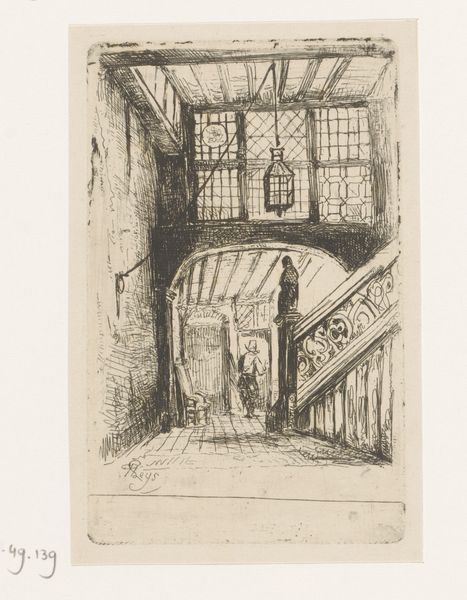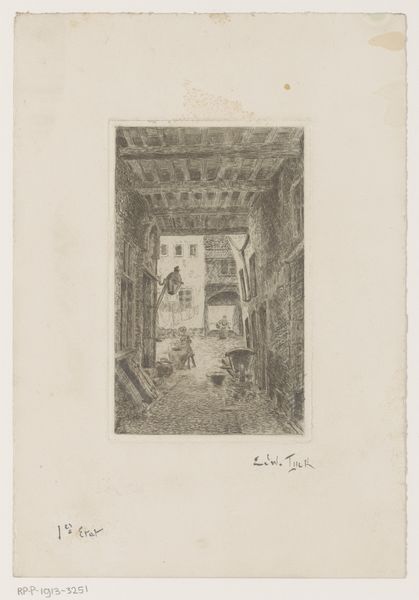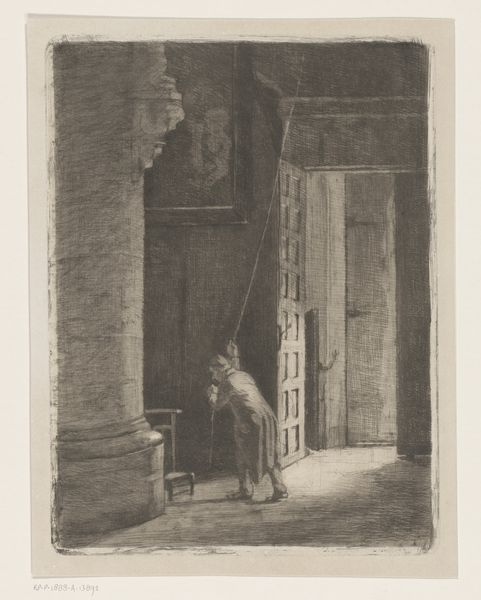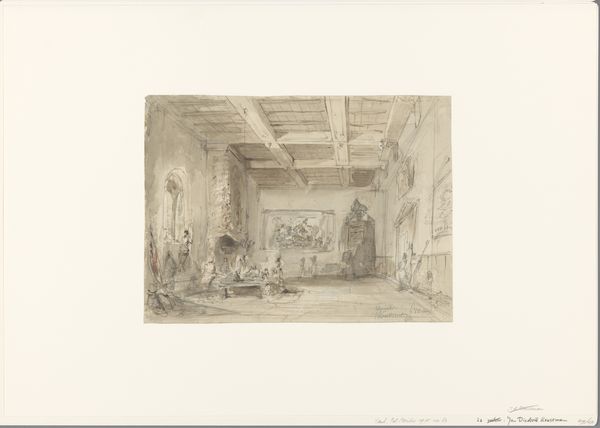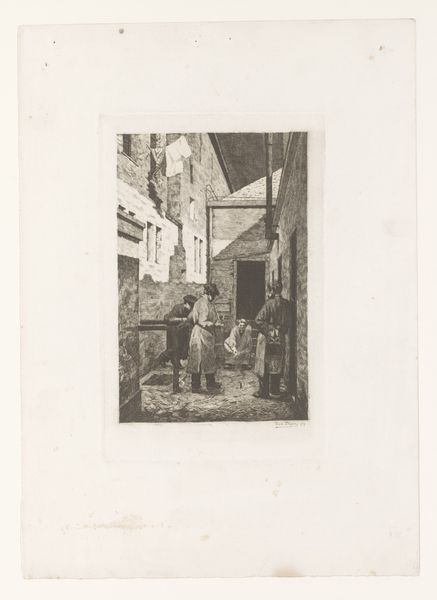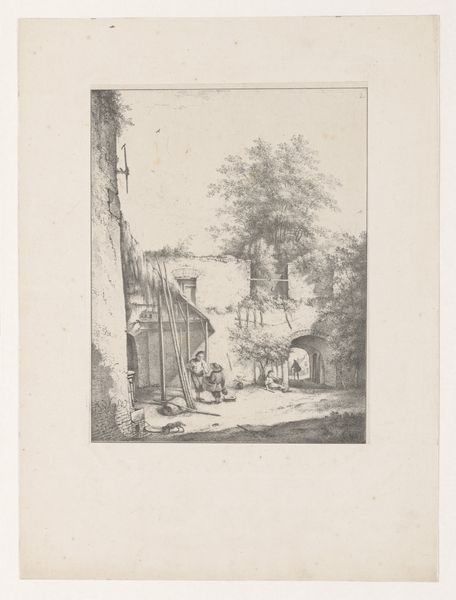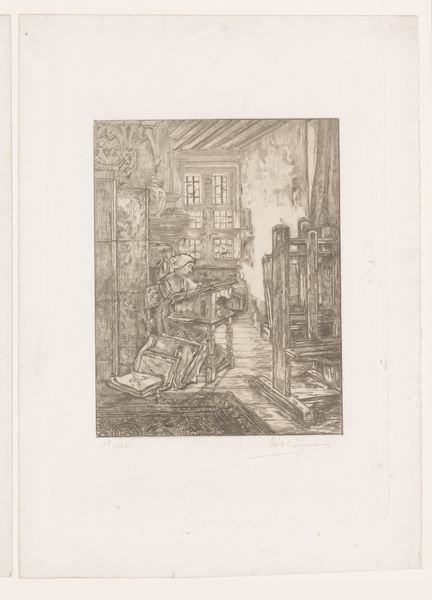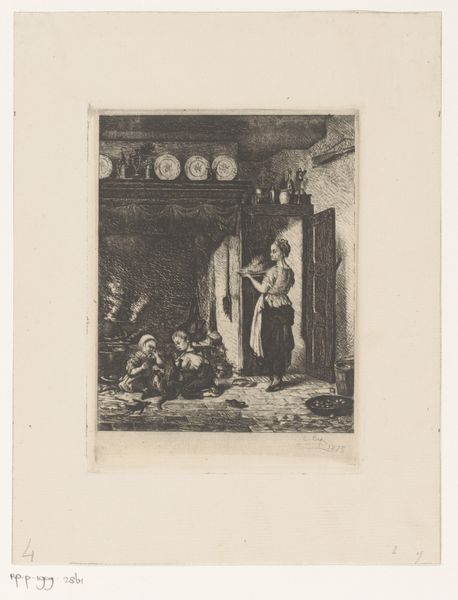
drawing, print, etching, engraving
#
drawing
# print
#
etching
#
line
#
cityscape
#
genre-painting
#
engraving
#
realism
Dimensions: height 320 mm, width 236 mm
Copyright: Rijks Museum: Open Domain
Editor: This is "Gezicht op een straat bij het Steen", or "View of a Street near the Steen," made before 1890 by Edouard Tyck. It's an etching, a type of print. It feels like stepping into a hidden, everyday moment. What social commentary, if any, can you gather from this work? Curator: What I see is a calculated framing of urban life and labor. Note how the architectural elements almost barricade the figures within the pictorial space. This isn't just a neutral depiction of a street scene. Instead, it speaks volumes about class structure, especially when prints were made for mass consumption and were thus tools of political discourse. Notice the contrast between the working class and the bourgeoise figures in the image? Editor: I see it now. The figures in the distance do look like they are keeping a close eye on them. Why choose etching? Curator: Exactly! The medium is crucial here. Etching allowed for the relatively easy reproduction and dissemination of images that commented on urban change, social stratification, and even labor disputes. Prints could be cheaply produced and thus served as a tool of advocacy. And the composition pushes the figures away and is mostly about architecture. This isn’t about the romance of the new industrialized society, or city, it’s about class structure in it. Does the composition make you think of something else, visually? Editor: The way the walls are built is not meant for community. All of the structures isolate. So would you say that Tyck is not simply documenting the architecture but actively critiquing it? Curator: Precisely! The print then becomes not just an image but an agent of that critique. By drawing our attention to how people are situated in relation to these architectural and societal structures, Tyck forces us to ask: who benefits from this organization? And, whose perspectives are made invisible? Editor: Wow, that's a completely different way to look at it! I was so focused on the details that I missed the bigger picture. Thanks! Curator: It shows the potent intersection between art and socio-political forces at the time, which broadens our understanding of not just the art but of its cultural significance.
Comments
No comments
Be the first to comment and join the conversation on the ultimate creative platform.
